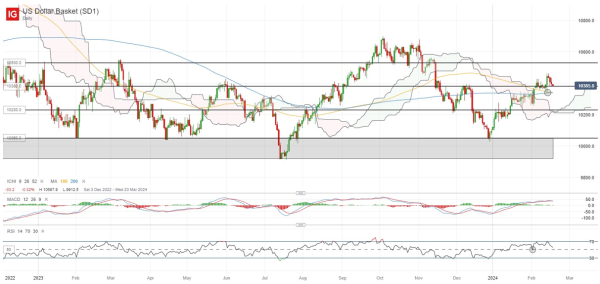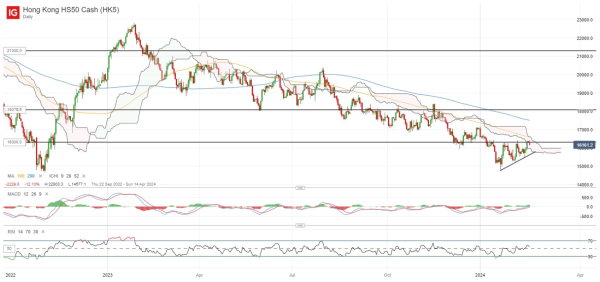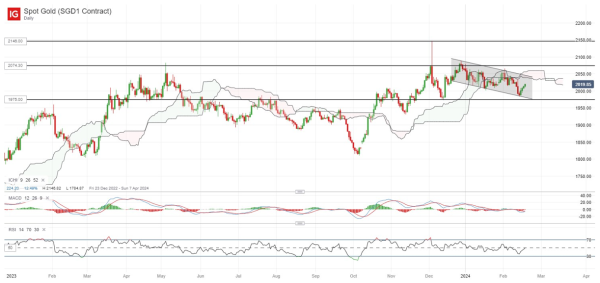Asia Day Ahead: US holiday to leave quieter start to the week, China back in focus
Market Recap
Above-expectations producer price index (PPI) readings out of the US last Friday contributed to some inflation jitters following the earlier consumer price index (CPI) scare, leading Wall Street to end the week in the red for the first time in six weeks. Nevertheless, the sell down in major US indices thus far still seems limited, with the scale far falling short of what would have been expected, given the jump in US Treasury yields to their two-month high.
The display of resilience may reflect market expectations for economic conditions to continue to hold up despite some delay in rate cuts, while the broader pricing trend is still disinflationary. The S&P 500 is back to retest its key 5,000 level once more but remains near its multi-year high. Ahead this week, all eyes will be on index-heavyweight Nvidia’s earnings, along with the Federal Open Market Committee (FOMC) meeting minutes to provides cues for market direction.
Despite the upmove in Treasury yields last Friday, the US dollar failed to find much follow-through, unwinding most of its post US-CPI surge. That said, the upward bias may remain intact as long as the 103.40 level holds. This level is where a key support confluence stands from its 200-day moving average (MA), along with initial dip-buying activities post-US CPI. Its daily relative strength index (RSI) may also have to see some defending at the key 50 level ahead. Any failure to defend the 103.40 level ahead may then call for a wider move lower to the 102.60 level next.

Asia Open
Asian stocks look set for a mixed open, with Nikkei -0.33%, ASX +0.11% and KOSPI +0.95% at the time of writing. All eyes are on Chinese equities, following its return from the Lunar New Year break and market conditions have been lukewarm thus far, with the CSI 300 up around 0.3% at the time of writing.
In a widely-expected move, the China’s central bank has kept its one-year medium-term lending facility (MLF) rate unchanged at 2.5% over the weekend, which highlighted its ongoing stance to balance easing financial conditions with the weaker Yuan. Decisions on its one-year and five-year loan prime rates are due tomorrow, which are likely to see no changes as well.
It may be a quieter start to the week, with the upcoming US holiday providing less cues for the global risk environment while the economic calendar has been largely bare. For the Hang Seng Index (HSI), it seems to be trading on a near-term ascending triangle lately, but the 16,300 level seems to be a strong challenge for buyers, where the upper triangle trendline stands along with its daily Ichimoku cloud resistance. Failure to cross the 16,300 level may pave the way back towards the 15,700 level, while any successful break could leave buyers to set its sight on the 17,000 level next.

On the watchlist: Gold prices attempting to pare its post-US CPI losses
Recent set of US economic data has left some pushback against earlier rate cuts, which weighed on gold prices initially. But given recent geopolitical developments that calls for tensions to drag on for longer, the yellow metal is finding some renewed traction on safe-haven flows. Failure for the US dollar to follow through with its recent gains despite higher Treasury yields also helps to offer some relief, with gold prices back to trade above its key psychological US$2,000 level.
Near-term, a descending channel pattern seems to be in place, with buyers to face a key test of resistance at the US$2,050 level, where the upper channel trendline stands alongside its daily Ichimoku cloud resistance. On the downside, the US$1,975 level will be key support to hold, where the lower channel trendline resides.

Friday: DJIA -0.37%; S&P 500 -0.48%; Nasdaq -0.82%, DAX +0.42%, FTSE +1.50%